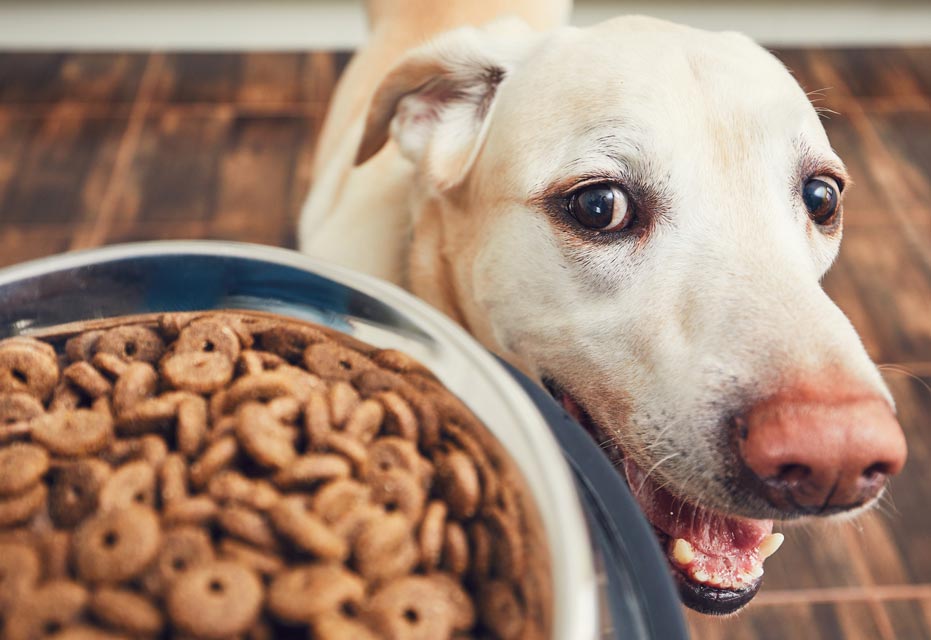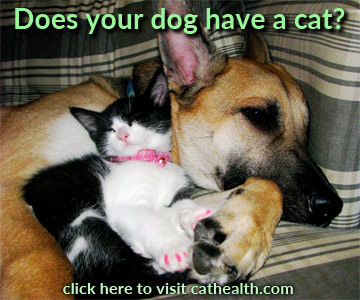Is Your Dog a Picky Eater?

It's dinner time, and you fill your dog's bowl with the food he's always eaten and loved…until recently. He walks over, sniffs it, looks at you with disapproval all over his furry face, and walks away.
Does this sound like your dog at meal times? We have some tips for what to do if your dog is a picky eater.
The First Step Is Always Visiting the Veterinarian
If your dog's pickiness is sudden or associated with any other signs of illness like vomiting, diarrhea, or lethargy, you should visit the veterinarian before applying any of the tips in this article. A medical condition often starts with a decrease in appetite. Catching a medical problem early often helps you avoid the development of more significant health problems.
If your dog gets a clean bill of health and your veterinarian believes the pickiness is behavioral, you can continue on with the tips in this article. But while you have the vet's attention, ask how many calories your dog should be eating every day and what type of food he or she recommends.
Stop the Table Scraps
If you're feeding your dog human food throughout the day, he probably isn't hungry enough to eat his own meals. Not only that, but he is also likely to think your food is tastier and hold out for that.
Ideally, avoid giving your dog table scraps from the beginning, but if you've already been doing so, it will take a little while for both of you to break the habit. One thing that can help is to always put any human food you're giving your dog in his bowl, mixed with his food. Don't give it to him directly from your plate, or he will neglect his bowl and sit by your feet while you eat instead.
Additionally, if you do give your dog any human food, make sure it's not one that's toxic to dogs or one that might contribute to the development of pancreatitis, as many fatty foods can.
Feed Meals on a Schedule
If your dog always has food in his bowl, he might be pickier about eating it than if a small amount appears there a few times a day. Meal feeding can encourage your dog to eat when the food is available.
Once you find out from your veterinarian how many calories your dog should eat daily, look on the package to see how many calories per cup the food you use for your dog contains. Do a little math and break your dog's total daily calorie allotment into two or three meal portions. Don't forget, if you give your dog treats, those have calories too, so adjust the food portions accordingly.
Don't Be Concerned if Your Healthy Dog Skips a Meal or Two
Try not to make a big deal out of meal times. If your dog skips a meal or two—especially during the transition from free choice feeding to meal feeding or from receiving human food treats to getting only dog food—don't worry too much. Pick up any food your dog hasn't eaten after 15 minutes and wait until the next scheduled meal time to give more.
Use Praise Instead of Treats for Training
If you spend a lot of time training your dog and use treats for reinforcement, he might be getting too many calories and not be hungry enough for meals. Transition to using praise for enforcement half the time and treats the other half. Break treats into small bits, or use pieces of the dog's regular daily kibble as training treats.
The majority of your dog's calories need to come from his regular diet, so he receives balanced nutrition. If your dog is getting mostly treats or human food, not only will he probably be pickier about his regular food, but he may also become deficient in some crucial nutrients.
Some Dogs Are Light Eaters
Some dogs are perfectly healthy but skip meals or are picky eaters naturally. If your veterinarian confirms that your dog is healthy, he isn't losing weight, his coat is shiny, and he doesn't tire easily or have low energy, you may not need to worry about his appetite at all.
As humans, we become concerned if our dog doesn't eat every meal voraciously, but in the wild, dogs often have a meal and then go for a while without food. Some dog breeds are more prone to following that eating pattern than others. If your dog is healthy with his current eating pattern, don't introduce problems by trying to get him to eat more or different food or to eat at an increased frequency.
If your dog is missing meals and has any other signs of illness like lethargy, vomiting, or diarrhea at the same time, call your veterinarian right away.
You May Also Like These Articles:
Dangers of Homemade Diets for Dogs
Wet Food Vs. Dry Food For Dogs
Pup-Sicles: Dog-Friendly Popsicle Recipes
Giving Your Dog Clean and Fresh Water
Can Eating Cat Litter Box Contents Make My Dog Fat?
Disclaimer: This website is not intended to replace professional consultation, diagnosis, or treatment by a licensed veterinarian. If you require any veterinary related advice, contact your veterinarian promptly. Information at DogHealth.com is exclusively of a general reference nature. Do not disregard veterinary advice or delay treatment as a result of accessing information at this site. Just Answer is an external service not affiliated with DogHealth.com.
Notice: Ask-a-Vet is an affiliated service for those who wish to speak with a veterinary professional about their pet's specific condition. Initially, a bot will ask questions to determine the general nature of your concern. Then, you will be transferred to a human. There is a charge for the service if you choose to connect to a veterinarian. Ask-a-Vet is not manned by the staff or owners of DogHealth.com, and the advice given should not delay or replace a visit to your veterinarian.



